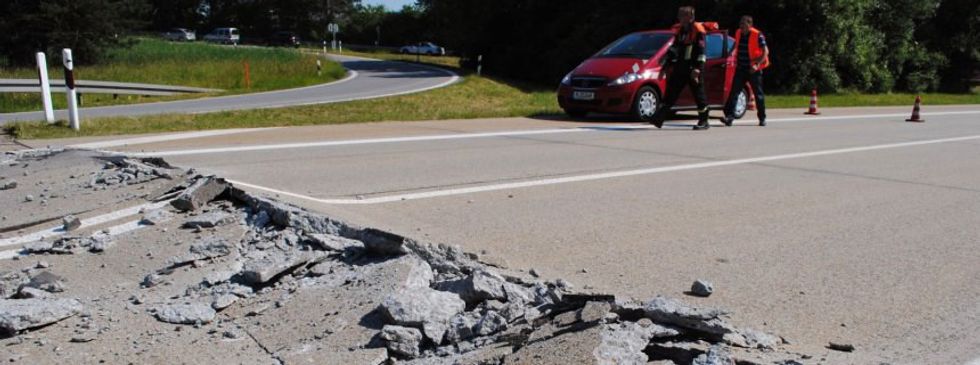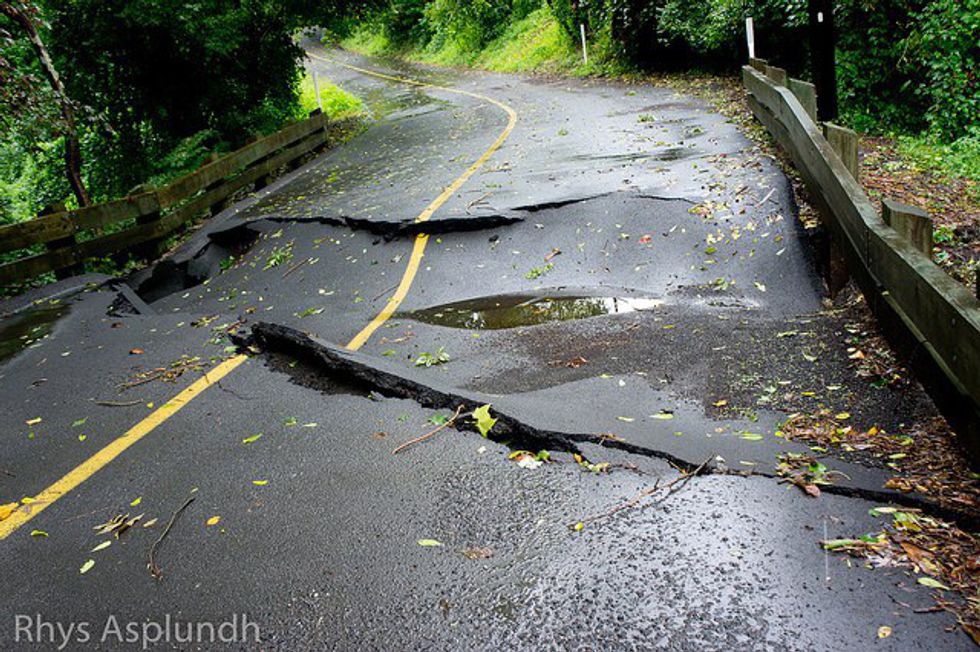Really, it’s that hot.
There have been some major backups along US route 131 in Grand Rapids the past week or so, slowing traffic to one lane and making going along the southbound route… just really not fun. The reason?
Well, having the road completely buckling underneath your tires isn’t really good for them.
Since it’s been so hot around here for such a long time, the roads have finally said enough. Most of US 131 in that area is made of concrete slabs connected together, and physics is wreaking havoc on the highway. When concrete is heated to temperatures higher than 90 degrees Fahrenheit for extended periods of time, the mixture will expand beyond the space that they have. That amount of pressure on the slabs is a lot like tectonic plates that are pushing together, and eventually, something has to give. In this case, it’s where one of the concrete slabs gets pushed underneath another, buckling the pavement.
The Kent County Road Commission has been putting in the hours trying to fix these buckled areas, but there’s only so much you can do with the heated up patch, which is the only thing these guys have readily available. Unless they want to do a complete overhaul on the highway, which really isn’t necessary, they use patch materials, which are mostly used to fill in potholes around the area until it’s time to actually redo a road.
The main problem with all of this is not only just the fact that the road is falling apart, but the fact that Michigan doesn’t really have the plans – or the money and manpower – to truly do something about it. US 131 has existed since the late 1920s, and while of course it’s been remodeled since then, it’s been a while since this area of the highway has been remodeled. This part of the road – at least the buckling part – is all on bridges, since it’s right around where US 131 meets with the I-96 highway. It’s also right in downtown Grand Rapids, and is a major thoroughfare that’s used by thousands of people every day on their way to and from work.
There are some ways to fix this problem, but with anything like this, its costs a lot of moolah. The majority of US 131 is concrete slabs joined together, which is more expensive, but more durable. The other option is to create a continuous stream of asphalt, which is cheaper and also more flexible than the concrete slabs. Putting asphalt down over the concrete in this situation wouldn’t help, however. Asphalt, since it’s more flexible, would not be strong enough to stop the concrete slabs from shifting in any extreme heat, and would buckle just as easily as the concrete in the right conditions. Asphalt also wears down much faster than concrete does, which is why we put those slabs down in the first place.
At any rate, trying to fix these road conditions would take a lot of time, energy, money, and manpower, some of which Michigan doesn’t have. For now, the best hope is that the Road Commission patchwork will hold up until a more permanent solution can be found.
Those darn potholes.





















